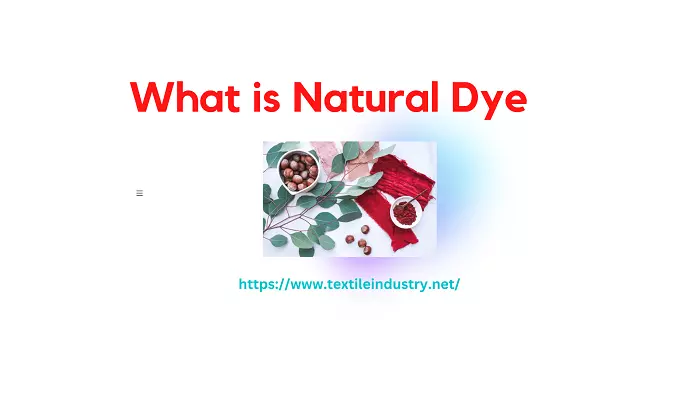Natural dyes are biodegradable, non-toxic, and non-allergenic It has a wide variety of health benefits and it has been mentioned in VEDAs as well. These dyes are easily decomposed in nature after use and they do not pollute the environment while destroying them after end use. In the present situation, sustainability and eco-friendly a big matters. The public demand in recent times has compelled different industries to move toward the frequent use of plant-derived natural colors that do not cause any detrimental effects on the environment and ecosystem. So, the main purpose of our project is to review the sustainability of natural dyes and achieve a process that is eco-friendly as fewer chemicals are used here. What is Natural Dye?
Natural dyes are derived from plants, insects, or minerals, rather than from synthetic sources. They have been used for centuries to color fabrics, yarns, and other materials. Examples of natural dyes also include indigo (from the indigo plant), madder (from the madder root), and cochineal (from the cochineal insect). Natural dyes are more environmentally friendly than synthetic dyes, as they do not produce the same level of pollution and toxicity. However, the use of natural dyes is more labor-intensive, and the colors produced are less consistent than fabrics produced with synthetic dyes.

Dyeing is a method that imparts beauty to the textile by applying various colors and shades to the fabric. Dyeing can be done at any stage of the manufacturing of a textile- fiber, yarn, fabric, or a finished textile product including garments and apparel. The dyeing process gives a fabric new look.
The dyeing of textiles with natural dyes has a long history and also had its presence beforehand. But, because of the invention of synthetic dyes in 1856, the use of natural dyes declined considerably. Again, at the very beginning of the twentieth century, the cost of synthetic dyes production was much decreased and as a result, natural dyes were almost ignored. But, due to creating worldwide environmental awareness, the attention on the application of natural dyes in natural fibers is increased.
Uses of Chemicals in the Dyeing process of Natural Dye
- Stabilizer: Stable the chemical reaction by inhibiting the reaction or slowing down the reaction.
- Caustic soda: Used to increase the strength, lusture, and dye affinity of the fabric.
- Hydrogen peroxide: Used as a bleaching agent for cotton fabric.
- Salt: Used to increase the dye affinity towards the cellulosic substrate & to retain the dye molecules.
- Soda ash: Used as color fixation, controlling pH, increasing absorbency
- Wetting agent: Helps in wetting the surface by reducing surface tension and helps water or chemical penetration.
- Lime/Chalk: Used as a color changer or color modifier to be added to the dye bath or mordant bath.
- Alum: Used as a mordant which allows a reaction to occur between the dye & fabric.
Machineries & Instruments
Open dye bath: Used for dyeing the samples.
Hydro-extractor: used to extract water from the fabric.
PH Indicator: Used to determine the ph of solution
Gas stove: Used for heating.
Electric Balance: Used to get the weight of the sample & different chemicals.
Dry & wet rubbing (Crockmeter): Determines the fastness of a dyestuff to either wet or dry condition. Used to test the color fastness of the fabric against rubbing.
GSM cutter: Used to cut samples for gsm checking.
For the purpose of making garments with naturally dyed fabric, dye extraction must be required in the preliminary steps. If extraction is done by synthesizing in an effective way and by using good quality mordant then the cost will be very low.The extraction rate of dyeing from natural dye gets increased so that it takes a lower amount of dye particles to produce the required color and shade.One of the major issues of natural dye is cost. After that its price is very high than regular garments price. Even so, there is a tendency to buy these exclusive products in some people because of the world is riding the tide of eco-friendliness. In the industry, the experts use enzyme wash for fading effect. On the other hand with a bleach wash, it is possible to bring the same effect at a low cost. But because of eco-friendly issues, they choose enzyme wash. The motive of a group of people is to create something new and to present something exclusive which is eco-friendly. But there has a personal matter of whether consumers buy or not. And If we follow the buying pattern of consumers and push exceptional eco-friendly products in the market there has always been a high demand for marker followers. So, Natural Dye is very good for the environment.
- You may love to read: Basic Anatomy of Reactive dye
- Application of Foam Technology in Textile Industry


